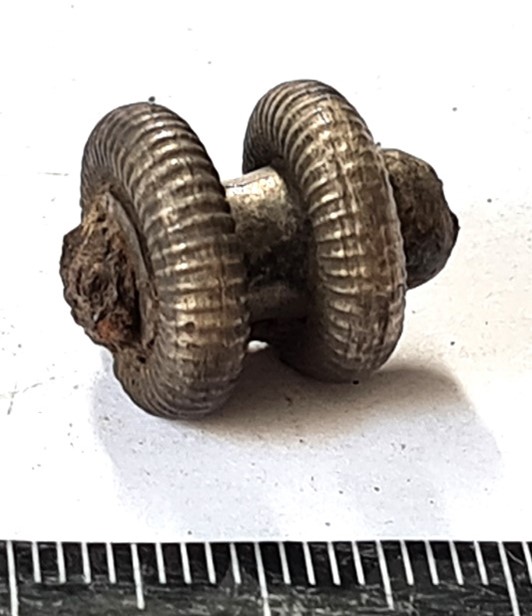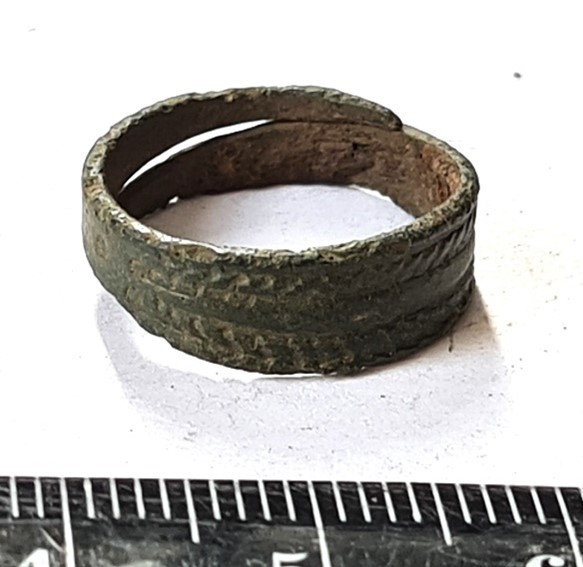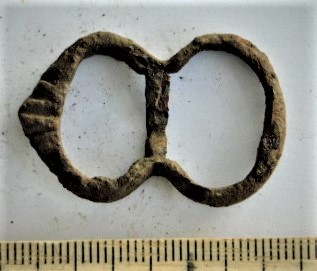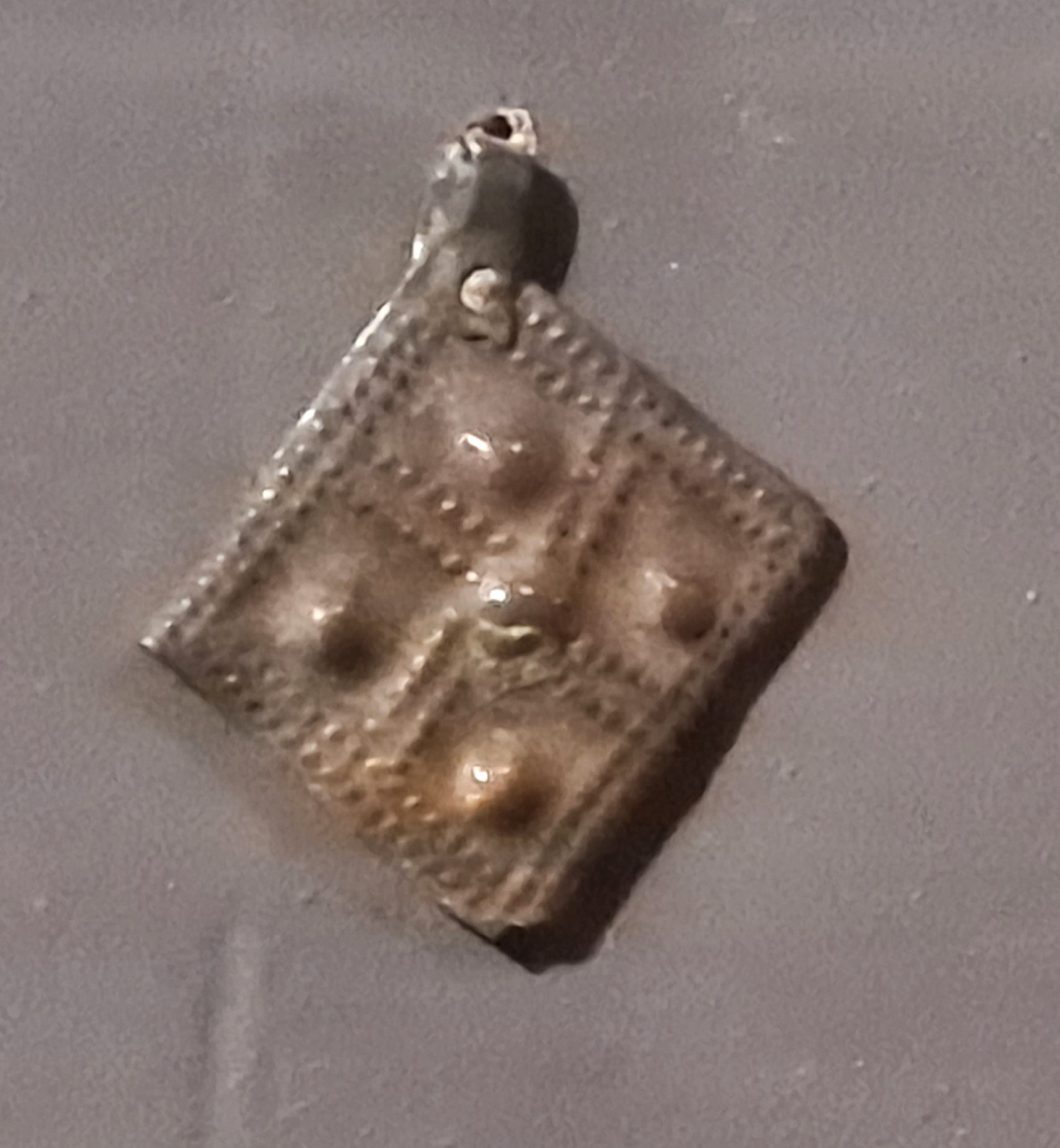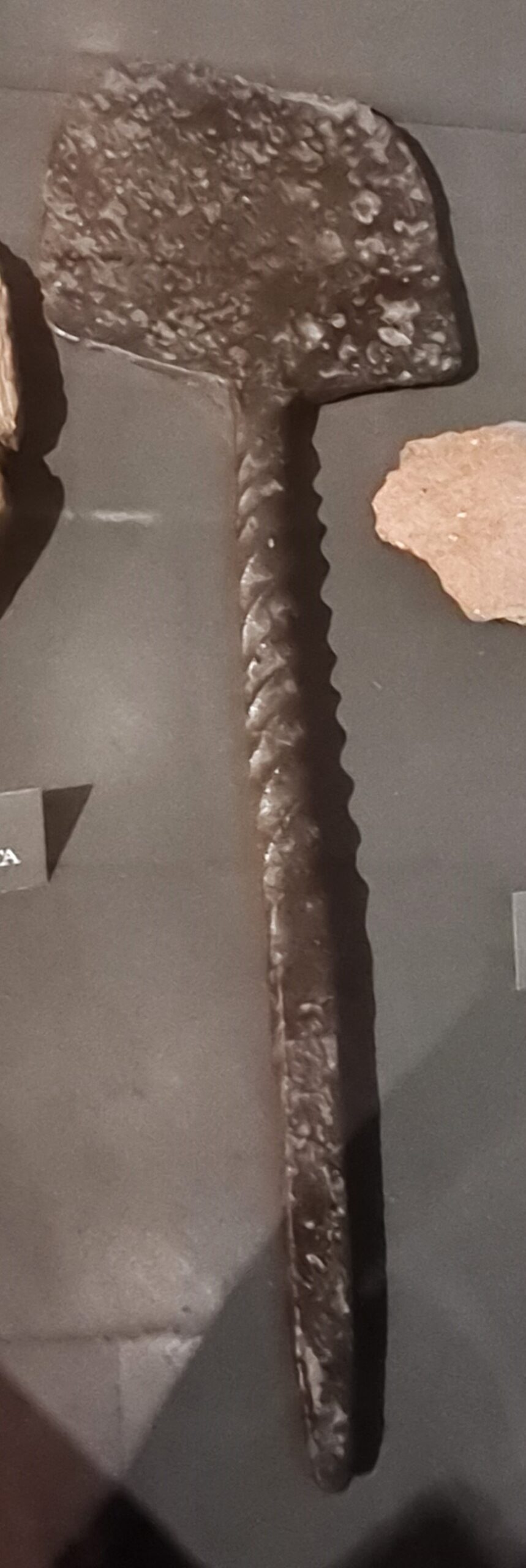Database
Our database is free to use for all history and archaeology enthusiasts. If you use our database, please do not forget to cite correctly:
Mägi, Marika; Palm, Piia Sandra. Archaeological Artefacts of Saaremaa. Foundation Osiliana / Tallinn University. Accessed: date.
The Osiliana Archaeological Database presents artefacts from Saaremaa and the surrounding small islands.
The database contains mainly Iron Age and Medieval finds that can be classified.
Undated metal or other pieces were generally excluded from the database.
Ceramics are represented by isolated examples.
The database is a work in progress and is constantly being updated.
Kalli
Fragment of crossbow brooch, iron and silver. A double ring set with an iron bar inside, plated with silver.
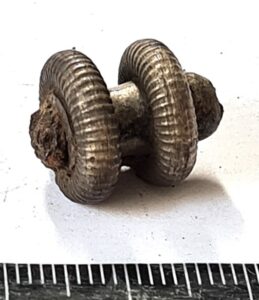
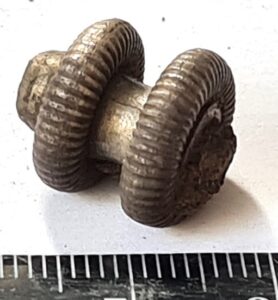
Fragment of crossbow brooch, iron and silver. A double ring set with an iron bar inside, plated with silver. Most likely from an arch. From the 5.-6. century, but may be from the 4th century as well (Rohtla 2005).
Literature:
Rohtla, M.-L. 2005. Crossbow Fibula as a Reflection of Social Status and Relations. – Culture and Material Culture. Interarchaeologia, 1. Ed. by V. Lang. Tartu – Riga – Vilnius, 121-145.
Kalli
Finger ring, bronze. Open, with flat front part. The front part has a side ornament made out of intertwined lines. Rings of this type are common in Estonian stone graves.
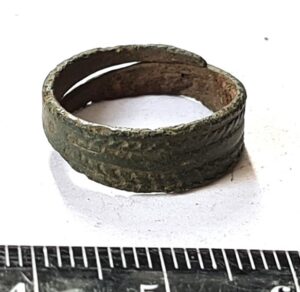
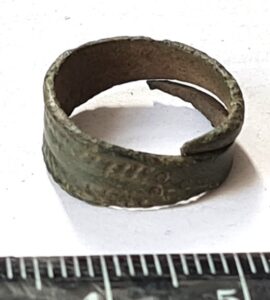
Finger ring, bronze. Open, with flat front part. The front part has a side ornament made out of intertwined lines. Rings of this type are common in Estonian stone graves. In Gotland they have been dated to the 10th-12th century (Thynmark-Nylén 1998, Taf 143: 24-28; 2006, 158), which is probably also correct for Saaremaa.
Literature:
Thynmark-Nylén, L. 1998. Die Wikingerzeit Gotlands II, Typentafeln. Stockholm: Kungl. Vitterhets Historie och Antikvitets Akademien.
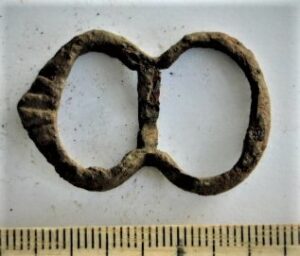
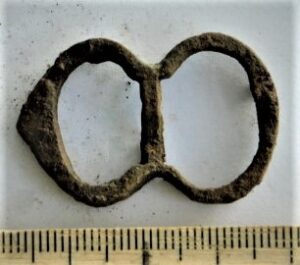
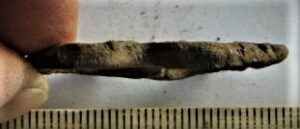
Belt-fitting, bronze.
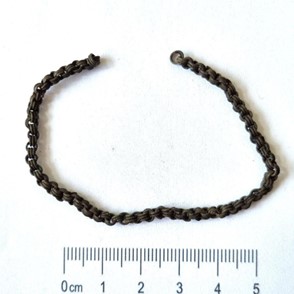
Valjala hillfort
Chain with double-looped links.
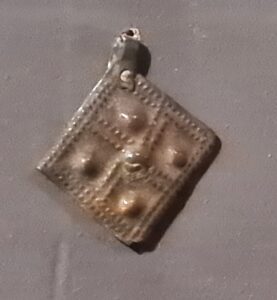
Pendant, lozenge-shaped. Such pendants are in Estonia and Latvia dated mainly to the 13th century and later (Kurisoo 2021, 146-147). Such pendants occur in several graves at Dundaga Laukmuiža cemetery in Couronis, which is dated to the second half of the 13th or the first half of the 14th century (Muižnieks & Žeiere 2021, 340). At the exhibition of Saaremaa Museum.
Literature:
Muižnieks, V. & Žeiere, I. 2021. Dundagas Laukmuižas 13. – 14. gadsimta senkapi. The 13th-14th Century Cemetery of Dundagas Laukmuiža. – Latvias nacionālā vēstures muzeja raksti nr. 30. Arheoloģija. Rīga, fig. 104.
Kurisoo, T. 2021. Adornment, self-definition, religion: Pendants of the north-eastern Baltic Sea region, 9th-13th century. – Studien zur Siedlungsgeschichte und Archäologie der Ostseegebiete, Band 19. Hamburg: Wachholz.
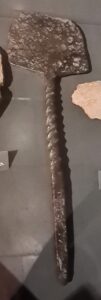
Iron spade. Similar ones have in Estonia been found for example in Otepää hill-fort and Lehmja settlement site, where they can be dated to a long period. Such spades have been interpreted as charcoal spades connected with smithery, or tools associated with cooking (Pets 2003, 170). At the exhibition of Saaremaa Museum.
Literature:
Peets, J. 2003. The Power of Iron. – Muinasaja teadus, 12. Tallinn.

Valjala hillfort
Iron rivet. At the exhibition of Saaremaa Museum.
Länga
Penannular brooch, copper alloy. Knob-shaped terminals. The loop has grooved thicker middle parts transversely grooved.

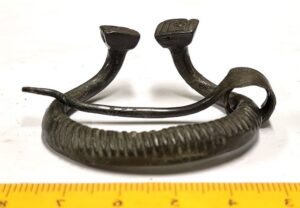

Penannular brooch, copper alloy. Knob-shaped terminals. The loop has grooved thicker middle parts transversely grooved. Similar brooches are often found in 13th-14th-century inhumation graves and only seldom in stone graves with cremations. In Karja, such brooch was registered in an inhumation dated to the second half of the 13th century (Mägi 2002, Pl. 125: 1–2), but in Siksälä, South-East Estonia, they also occur in 14th-century graves (Valk et al 2014).
Mägi, M. 2002. At the crossroads of space and time: graves, changing society and ideology on Saaremaa (Ösel), 9th–13th centuries AD. Tallinn.
Valk, H., Ratas, J., Laul, S. 2014. Siksälä kalme II. Matuste ja leidude kataloog. Tartu Ülikool: Tartu.
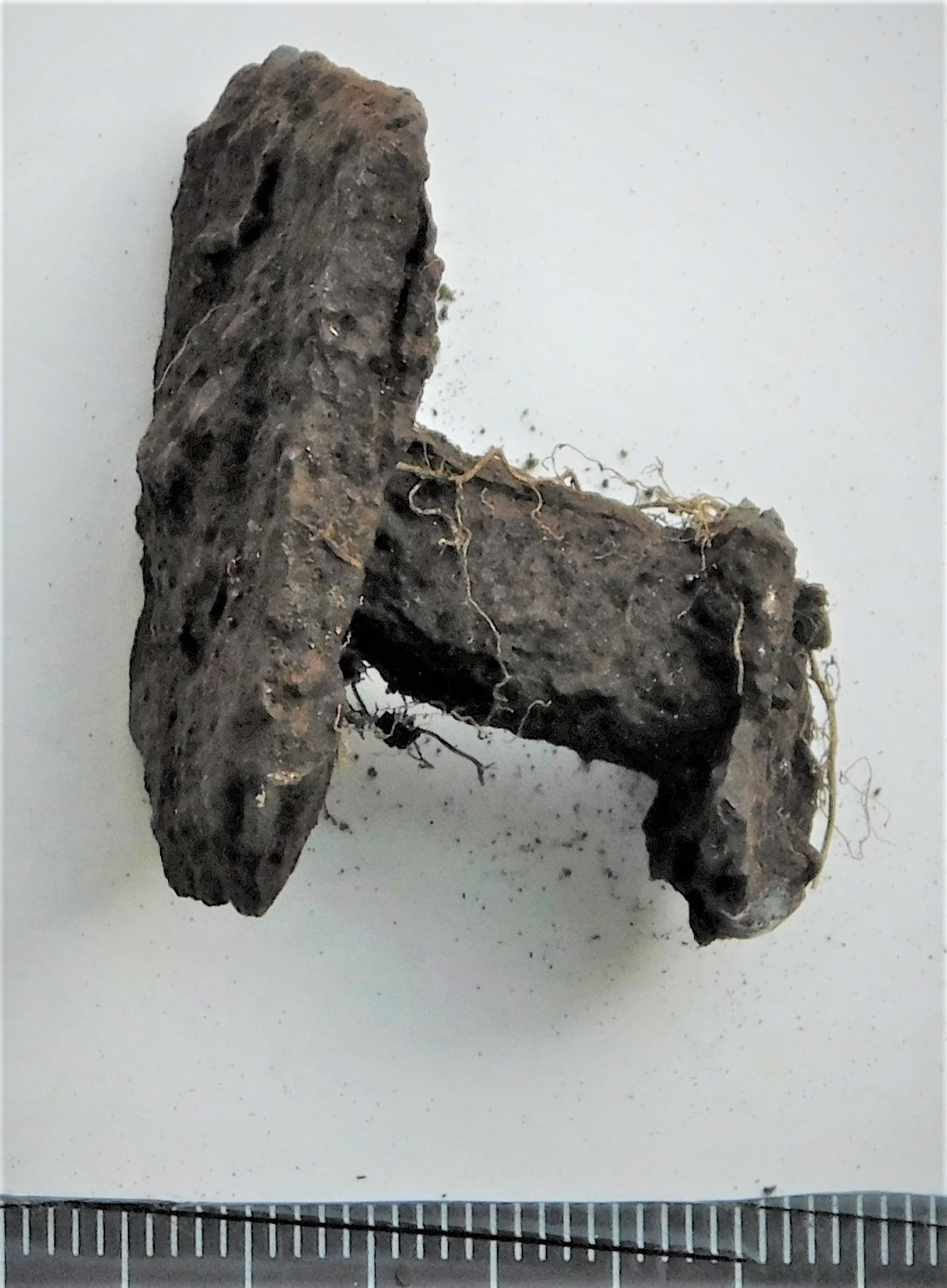
Mullutu
Boat rivet, iron.
The negative value refers to time Before Christ.

